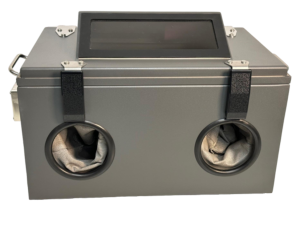Feature engineering is a crucial step in the machine learning process that allows you to unlock the full potential of your data. By carefully selecting, extracting, and transforming features, you can improve the performance of your models and achieve better results. This guide will explore the various techniques used in feature engineering and show you how to implement them in practice. From data exploration and preparation to advanced techniques like PCA and autoencoders, we will cover everything you need to know to take your machine-learning models to the next level. Whether a beginner or an experienced data scientist, this guide will provide you with the knowledge and tools you need to master feature engineering and achieve better results.”
Data Exploration and Preparation: The Foundation of Feature Engineering
“Data exploration and preparation is the foundation of feature engineering. It is the process of understanding the characteristics of your data, identifying patterns, and cleaning, transforming, and formatting it so that it can be used in machine learning models. This step is crucial as it allows you to identify any issues with the data and address them before they become a problem in the modeling stage.
During data exploration, you will look at the data distribution, check for missing or duplicate values, and identify any outliers. This will give you a good understanding of the data and help you identify any issues that need to be addressed.
Feature Selection: Choosing the Right Inputs for Your Model
Feature selection selects a subset of relevant features for building a machine-learning model. The goal is to select a subset of features that contains the most relevant information for predicting the target variable while minimizing the number of irrelevant or redundant features. There are many techniques for feature selection, including univariate selection, mutual information, and lasso regression. The best technique to use will depend on the specific problem and dataset. It’s important to note that feature selection should be performed before any model training, and it’s an important step to improve the accuracy and interpretability of the model.
Feature Extraction: Creating New Features from Existing Data
Feature extraction is the process of creating new features from existing data. It is often used to transform raw data into a form that machine learning models can more easily use. The new features are typically derived from the original features and are designed to capture important information that may not be easily observable from the raw data. Some standard techniques for feature extraction include principal component analysis (PCA), linear discriminant analysis (LDA), and independent component analysis (ICA). These techniques can be used to reduce the dimensionality of the data, extract important features, and make the data more suitable for machine learning models. It’s important to note that feature extraction should be performed before any model training, and it’s an important step to improve the accuracy and interpretability of the model.
Feature Transformation: Scaling and Normalizing Data for Optimal Performance
Feature transformation is scaling and normalizing data to optimize the performance of machine learning models. The goal is to transform the features to have similar scales and distributions. This can benefit many machine learning algorithms because many assume the features are on a similar scale and have similar distributions.
Scaling is the process of changing the range of the data and, for example, scaling a feature to have values between 0 and 1 or between -1 and 1. This is often done by subtracting the minimum value from each data point and then dividing by the range of the data.
Normalization is changing the data distribution and, for example, normalizing the data so that it has a mean of 0 and a standard deviation of 1. This is often done by subtracting the mean from each data point and then dividing it by the standard deviation.
Some standard techniques for feature transformation include Min-Max Scaling, Z-Score normalization, and log scaling. These techniques should be applied after feature selection and extraction before the model training. It’s important to note that feature transformation should be performed with care, as it can change the data distribution and make it hard to interpret the results.
Advanced Feature Engineering Techniques: PCA, LLE, and Autoencoders
PCA (Principal Component Analysis), LLE (Locally Linear Embedding), and Autoencoders are advanced feature engineering techniques that can extract useful information from complex and high-dimensional data.
The data is projected into a lower-dimensional space using the linear dimensionality reduction method known as PCA. It finds the linear combinations of the original features that explain the most variance in the data. PCA is useful for reducing the dimensionality of the data and removing noise and redundancy from the features.
LLE is a non-linear dimensionality reduction technique that preserves the local structure of the data. It finds a low-dimensional representation of the data while keeping similar points close together in the low-dimensional space. LLE helps preserve the structure of the data when it is not linear.
Autoencoders are neural networks that are trained to reconstruct their input data. They are composed of an encoder and a decoder. The encoder maps the input data to a low-dimensional representation, and the decoder maps the low-dimensional representation back to the original data. Autoencoders can be used for feature extraction and dimensionality reduction and can also be used for tasks such as anomaly detection and image denoising.
Conclusion
In conclusion, feature engineering is essential in building machine learning models. It involves selecting, extracting, and transforming the features to optimize the model’s performance. There are many techniques for feature engineering, including univariate selection, mutual information, and lasso regression for feature selection, principal component analysis (PCA), linear discriminant analysis (LDA), and independent component analysis (ICA) for feature extraction and min-max scaling, z-score normalization, and log scaling for feature transformation. In advanced feature engineering, PCA, LLE, and Autoencoders extract helpful information from complex and high-dimensional data.
Also chech : What Is Palo alto networks: Everything You Need to Know




